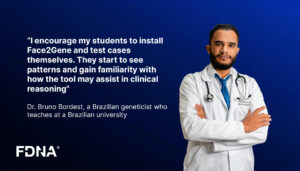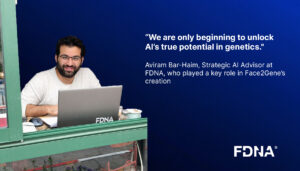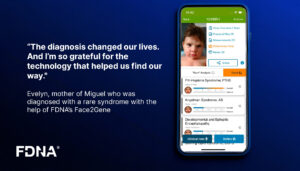April 26, 2016
Gripp KW, Baker L, Telegrafi A, Monaghan KG.
The role of objective facial analysis using FDNA in making diagnoses following whole exome analysis. Report of two patients with mutations in the BAF complex genes. Am J Med Genet A. 2016 Apr 26. doi: 10.1002/ajmg.a.37672
Abstract
The genetic basis of numerous intellectual disability (ID) syndromes has recently been identified by applying exome analysis on a research or clinical basis. There is a significant clinical overlap of biologically related syndromes, as exemplified by Nicolaides-Baraitser (NCBRS) and Coffin-Siris (CSS) syndrome. Both result from mutations affecting the BAF (mSWI/SNF) complex and belong to the growing category of BAFopathies. In addition to the notable clinical overlap between these BAFopathies, heterogeneity exists for patients clinically diagnosed with one of these conditions. We report two teenagers with ID whose molecular diagnosis of a SMARC2A or ARID1B mutation, respectively, was established through clinical exome analysis. Interestingly, using only the information provided in a single clinically obtained facial photograph from each patient, the facial dysmorphology analysis detected similarities to facial patterns associated with NCBRS as the first suggestion for both individuals, followed by CSS as the second highest ranked in the individual with the ARID1B mutation. Had this information been available to the laboratory performing the exome analysis, it could have been utilized during the variant analysis and reporting process, in conjunction with the written summary provided with each test requisition. While the available massive parallel sequencing technology, variant calling and variant interpretation are constantly evolving, clinical information remains critical for this diagnostic process. When trio analysis is not feasible, additional diagnostic tools may become particularly valuable. Facial dysmorphology analysis data may supplement the clinical phenotype summary and provide data independent of the clinician’s personal experience and bias.


